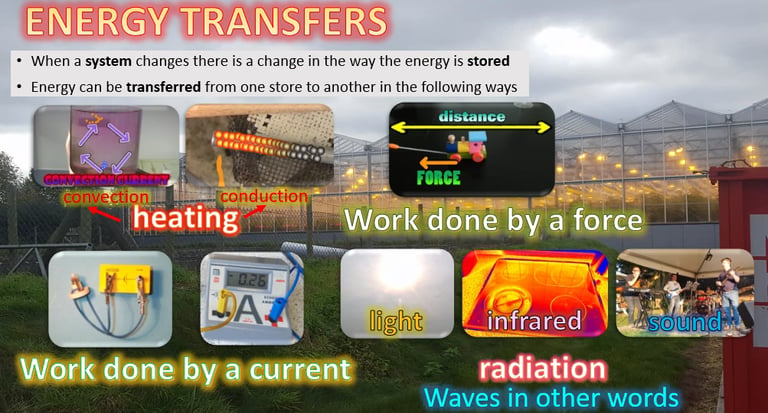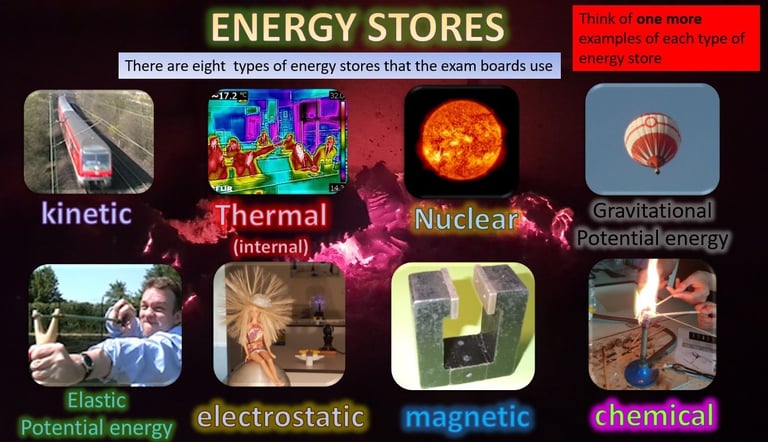CONSERVATION OF ENERGY
This is one of the fundamental concepts of Physics in our Universe. Other Universes might be different. Energy cannot be created or destroyed, it can only be transferred from one energy store to another. Enter the world of energy stores and energy transfers. Watch the videos and learn how to use some of the most useful physics equations that you will ever meet.

QUICK QUIZ: ENERGY STORE OR ENERGY TRANSFER?
Look at the words below. Are they types of energy stores or methods of energy transfers? You decide! Hover over the words to find out the answers.
















ENERGY: THE KEY KNOWLEDGE
Energy can be described as being in different “stores.” These stores represent where energy is held or stored.
Examples of energy stores include:
Chemical energy: Stored in the bonds between atoms and molecules (e.g., food, batteries).
Gravitational potential energy: Associated with an object’s height above the ground.
Elastic potential energy: Stored in stretched or compressed materials (e.g., a spring).
Kinetic energy: Associated with the motion of an object.
Thermal energy: Related to the internal motion of particles (heat).
Energy Transfers:
Energy transfers occur when energy moves from one store to another.
Whenever there is a change in a system, there is a change in the way some or all of the energy is stored.
Examples of energy transfers include:
Mechanical work: When a force moves an object through a distance (e.g., pushing a swing).
Electrical work: Charges moving due to a potential difference (e.g., powering a light bulb).
Heating: Due to temperature differences (e.g., boiling water in a kettle).
Radiation: Energy transferred as waves (e.g., light and infrared radiation).
Energy flow diagrams (such as transfer diagrams and Sankey diagrams) can visually represent how energy moves from one store to another.




ENERGY TRANSFER DIAGRAM
SANKEY DIAGRAM

SANKEY ENERGY DIAGRAMS - THE VIDEO
Energy transfer madness in a video full of crazy characters, noise and a total lack of efficiency. Despite all this, people actually find it very useful! Sankey diagrams explained.... by mad, noisey people....




